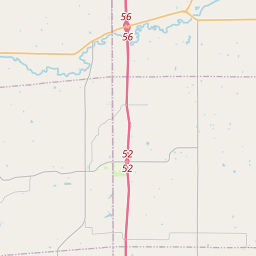104 West Ashland
Historical marker location:
104 West Ashland Avenue, Indianola, Iowa
( Marker is on West Ashland Avenue west of North Howard Street, on the right when traveling west.)







© OpenStreetMap contributors
More history nearby
Iowa is known for its agricultural production, but did you know that it was once a major producer of coal? In the late 1800s and early 1900s, Iowa had more than 200 coal mines, and coal was the state's leading industry.
About Warren County
Warren County Timeline
Warren County, Iowa has a rich history dating back thousands of years. Prior to European settlement, the area was inhabited by various Native American tribes, including the Ioway, Sac, and Meskwaki tribes. These tribes primarily relied on hunting, fishing, and agriculture for their livelihoods.
The first European settlers arrived in the early 1840s, attracted by the fertile land. In 1846, Warren County was officially organized, named after General Joseph Warren, a hero of the American Revolutionary War. The county's first settlers faced numerous challenges, including conflicts with Native American tribes and the hardships of pioneer life. However, as more settlers arrived, communities began to emerge, and agriculture became the driving force behind the county's economy.
Throughout the late 19th and early 20th centuries, Warren County continued to grow and prosper. The arrival of the railroad in the 1870s brought new opportunities for trade and transportation. The county became known for its production of corn, soybeans, and livestock, and farming remained the backbone of the local economy. Towns like Indianola, the county seat, became bustling centers of commerce and culture, boasting schools, churches, and other amenities.
Despite economic challenges during the Great Depression, Warren County rebounded as the United States entered World War II. The county played a significant role in supporting the war effort, and its agricultural output contributed to feeding a nation at war. After the war, Warren County experienced increased industrialization and urbanization, as more people moved to the area seeking job opportunities. Today, Warren County continues to be a thriving community with a diverse economy, while still preserving its agricultural roots and rich historical heritage.
The first European settlers arrived in the early 1840s, attracted by the fertile land. In 1846, Warren County was officially organized, named after General Joseph Warren, a hero of the American Revolutionary War. The county's first settlers faced numerous challenges, including conflicts with Native American tribes and the hardships of pioneer life. However, as more settlers arrived, communities began to emerge, and agriculture became the driving force behind the county's economy.
Throughout the late 19th and early 20th centuries, Warren County continued to grow and prosper. The arrival of the railroad in the 1870s brought new opportunities for trade and transportation. The county became known for its production of corn, soybeans, and livestock, and farming remained the backbone of the local economy. Towns like Indianola, the county seat, became bustling centers of commerce and culture, boasting schools, churches, and other amenities.
Despite economic challenges during the Great Depression, Warren County rebounded as the United States entered World War II. The county played a significant role in supporting the war effort, and its agricultural output contributed to feeding a nation at war. After the war, Warren County experienced increased industrialization and urbanization, as more people moved to the area seeking job opportunities. Today, Warren County continues to be a thriving community with a diverse economy, while still preserving its agricultural roots and rich historical heritage.
Warren County Timeline
This timeline provides a condensed summary of the historical journey of Warren County, Iowa.
- 1846: Warren County, Iowa is established as a county.
- 1851: Indianola is chosen as the county seat.
- 1854: The first courthouse is built in Indianola.
- 1861-1865: Warren County residents serve in the Civil War.
- 1875: The second courthouse is built in Indianola.
- 1876: The first railroad is built in Warren County.
- 1890s: Warren County experiences a coal mining boom.
- 1910: A new courthouse is constructed in Indianola.
- 1930s: Warren County is severely affected by the Great Depression.
- 1960s: Warren County's population starts to grow rapidly.
- 1975: The historic Red Bridge is moved to Summerset State Park.
- 1998: The Warren County Veterans Memorial Building is dedicated.
- Today, Warren County is a thriving community with a diverse economy.